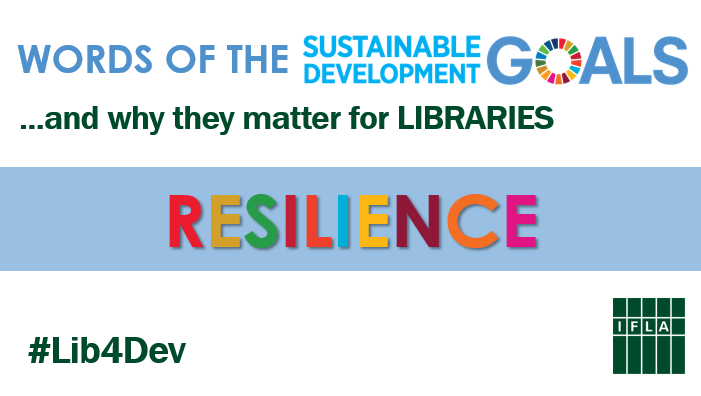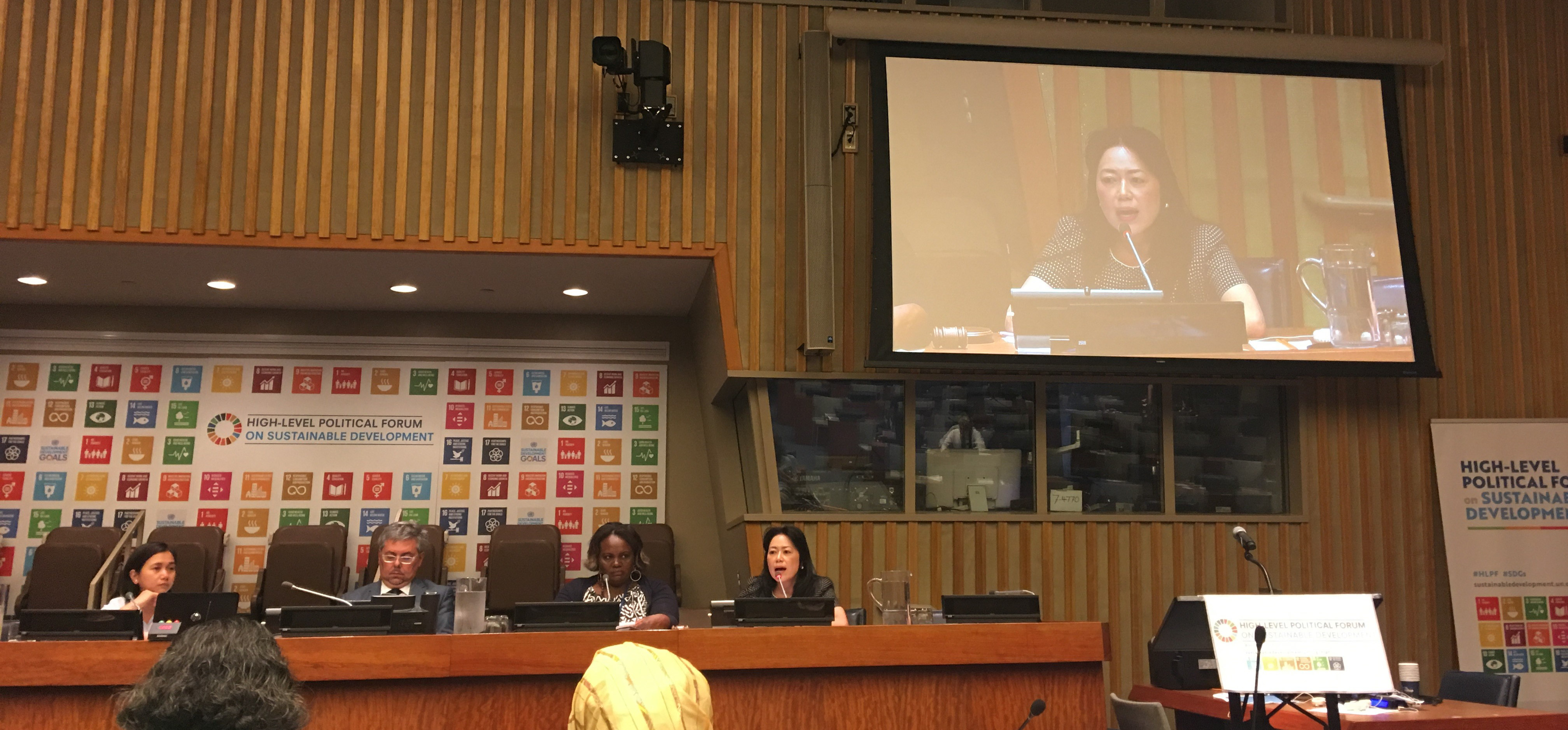On 6 June 1994, the International Committee of the Blue Shield was established in a spirit of collaboration by the International Council on Archives (ICA), the International Council of Museums (ICOM), the International Council of Museums and Sites (ICOMOS), and IFLA.
To celebrate the 25th anniversary of Blue Shield, we look back at its history and a few examples of how it has provided support and opportunities for libraries, at the international and national levels.
A Look Back
The Blue Shield is rooted in the 1954 Hague Convention for the Protection of Cultural Property in the Event of Armed Conflict, as well as its First Protocol (1954) and Second Protocol (1999), which created rules to protect cultural property during armed conflicts [see IFLA’s briefing on this Convention here].
The intention was to bring the four key international organisations in their domains together to consult on matters relating to the protection of cultural heritage in the case of natural and human-caused threats and emergencies, particularly that of war.
The goal was to better facilitate an international response to threats and emergencies through cooperation between the key international organisations and participating national organisations. This included the objectives of facilitating professional action to prevent, control, and recover from disasters, consulting with other bodies such as UNESCO and the International Committee of the Red Cross, and encouraging higher standards of risk preparedness.
The International Committee of the Blue Shield (ICBS) and the Association of National Committees of the Blue Shield (ANCBS) were combined in 2016 to form Blue Shield International. This brought together the Founding Four organisations together with a network of National Committees made of up dedicated individuals, all working together to protect cultural property.
Today, Blue Shield International is as an official partner of NATO and cooperates with armed forces on training exercises concerning cultural property protection in armed conflict. This takes an important step towards raising awards within armed forces of their critical role in cultural property during conflict.
Blue Shield and IFLA
Libraries around the world hold irreplaceable books, manuscripts, and other materials. Together, they form a network which collectively safeguards much of the world’s historical record.
Tragically, libraries around the world – including many of our members – have seen first-hand the destruction that conflict and disaster can bring to their institutions and collections.
IFLA believes that these threats are best faced through capacity-building for prevention and preparedness, as well as through enabling a rapid and effective response if the worst happens. This can be achieved best with the help of a network. Within IFLA, our Preservation and Conservation (PAC) Network has been essential in both sharing knowledge on disaster planning and preparedness and in taking action to support response in times of crisis and subsequent recovery.
Combining these efforts with those of Blue Shield has enabled more effective response, facilitating critical information-sharing and integrating the needs of libraries on the ground into international response and recovery frameworks.
Haiti 2010
One case that sticks with us in the response to the devastating 2010 Haiti earthquake. Days after the earthquake struck, Blue Shield established an online platform to invite volunteers from around the world to support measures necessary to rebuild libraries, archives, museums, monuments and sites. IFLA and ICA planned, funded, and sent representatives to take part in a mission to inform the establishment of a rescue centre for damaged cultural heritage, including damaged documents [report here].
This rescue centre also provided preservation workshops to members of the National Library of Haiti (NBH) and Archives of Ministry of Foreign affairs of Haiti (MEA).
More information on IFLA’s involvement in the response to the 2010 Haiti Earthquake can be found here.
Beirut 2020
The response to the Beirut Blast in August 2020 gives a more recent example how this partnership has allowed joint action to help libraries following disaster. The Lebanese Library Association (LLA), working closely with Blue Shield Lebanon, took the critical first steps towards recovery of the city’s libraries.
The LLA carried out assessments to gather information on the extent of damage at libraries and archives across the city and shared this information with IFLA. This coordinated effort allowed us to provide critical information on damage and needs to Blue Shield International, as well as with other international partners, including UNESCO through participation in the Coordination Meetings for Emergency Response on Culture in Beirut.
In the months that followed, a collaborative response was carried out by Blue Shield Lebanon, Blue Shield International, Directorate-General Of Antiquities of Lebanon, IFLA, ICOM-Lebanon, ICOMOS-Lebanon, Lebanese Library Association, UNESCO Beirut Office, ICOM – University Museums and Collections, Biladi and UNIFIL, with generous financial support of the ALIPH Foundation, British Council Cultural Protection Fund and the Prince Claus Fund.
You can find videos here for a closer look at Blue Shield’s Emergency Response for Cultural Property in Beirut.
Working for Libraries
In addition to the Founding Four organisations, Blue Shield International is also made up of a network of National Committees, through which dedicated cultural heritage professionals carry out work addressing local priorities.
A prerequisite for establishing a National Committee is gaining support from the national library association and/or national library association in the country. This helps ensure that a connection between national Blue Shield committees and the nation’s libraries has been established. IFLA members are represented on Blue Shield national committees and contribute to activities that benefit national libraries in disaster planning and preparedness.
Australia
In 2019, the Australian Library and Information Association (ALIA), together with Blue Shield Australia, launched the 2nd Edition of the ALIA Disaster Management for Libraries Guide, Templates and Scenarios.
This tool is designed to help library staff respond quickly and effectively to disaster, minimise loss of collections and equipment, ensure staff safety and well-being of staff, continue providing services when possible, and recover quickly.
See more on the website of Blue Shield Australia.
To further build preparedness capacity, the State Library of South Australia hosted the symposium, Disaster Preparedness and Our Cultural Heritage and Collections, in late 2020.
Georgia
Blue Shield Georgia carried out the project, Emergency response to mould outbreak at Ivane Javakhishvili Tbilisi State University Library, in 2016-2017. This project was made possible by the Prince Claus Fund Cultural Emergency Response (CER).
The project evaluated general storage conditions affecting special collections at the library to halt a large mould outbreak, defined a protocol for handling and cleaning damaged rare books, and corrected the storage problems causing the outbreak.
The outbreak threatened 200,000 rare books at the library. This project avoided further damage to the collection, while improving awareness among institutions holding documentary heritage collections in Tbilisi of how to manage and avoid such hazards. Read more here.
Iceland
In early 2020, Blue Shield Iceland hosted the symposium: response plan of cultural institutions; what is the situation and what is the future goal? This event invited several experts in institutional disaster planning and response to share knowledge of good practices among cultural heritage professionals.
Within the programme, Blue Shield Iceland invited Nelly Cauliez, Director of the City Library of Geneva, to share information on the response plan and preservation of cultural heritage in Switzerland, with an emphasis on disaster response planning in a library context. Read more here.
Looking Ahead
The spirit of collaboration for the sake of cultural property protection which brought the founding four organisations together in 1996 continues to be at the heart of Blue Shield International.
Disaster and conflict are always complicated and multifaceted, and the cooperation of our international organisations, together with the dedication, expertise, connections, and local knowledge of National Committees of the Blue Shield engaging library associations and other professionals, helps enable an effective response.
Through the continuation of this collaborative effort, we can work towards a holistic safeguarding of the world’s diverse cultural heritage, enable international exchanges, and promote good practice.
IFLA is committed to ensuring that the cultural heritage protected by institutions and sites around the world continues to be available for future generations to access, learn from, and enjoy.
We encourage you to check if there is a Blue Shield National Committee in your country, and to get involved in their work.
For more on IFLA and the Blue Shield, see our Get into the Blue Shield Guide.

